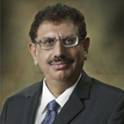Head and neck cancers, categories lip, oral cavity, pharynx and larynx are placed amongst the top ten malignancies globally. The cancers have a similar epidemiology, risk factors, morphology, and control measures. The geographical variations in incidence are indicative of the global differences in the prevalence of risk factors. The present study was conducted with the objective of reviewing descriptive epidemiological characteristics, incidence and time trends of head and neck cancers in Karachi (1995-2002). Head and neck cancers accounted for approximately one-fifth (21%) of the cancers in males and about one-tenth (11%) in females in the study period. The age standardized incidence rate (ASR) was 37.1/100,000 in males and 21.7/100,000 in females. In males, oral cavity and larynx were the commonly affected sites, followed by pharynx. In females, oral cavity was the preponderant site. The mean age of the patients was 53.0 years (95% CI 48.0; 58.0). A rising incidence was observed in both genders, more apparent in males. About 30% of oral cancer cases, 28.6% of the nasopharyngeal, 6.3% of the oropharyngeal, and 2.6% of laryngeal cancers occurred in patients 40 years and younger. The age specific incidence rates (ASIR) for oral cancer in males showed a gradual rise from 10 to 64+ years of age, for pharynx from 20 to 64+ and for larynx at 25+. The ASIR for oral cancer in females showed a gradual rise from 14 to 64+ years of age, for pharynx from 20 to 64+, a decade after the oral cancer rise and cancer larynx showed a rise at 25+, a decade and a half after the oral cancer rise. The peak incidence was at 64-69 years for all three cancer sites, in both genders. Pakistan falls into a high risk head and neck cancer geographical zone Presentation is late and treatment is not optimum. Recommendations, therefore for NCCP Pakistan, for short term benefits are selected community-based screening for the high risk population, early diagnosis, better treatment, rehabilitation and palliative care. These measures will improve survival and also contribute to a better quality of life. Primary prevention remains the only strategy for absolute cancer control.
Available at: http://works.bepress.com/shahid_pervez/28/
